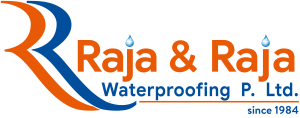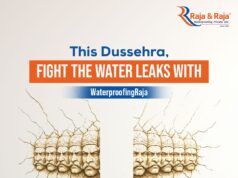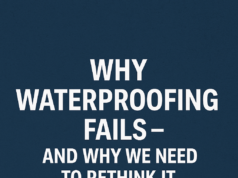💧 Why & How Stagnant Water Damages Waterproofing Layers
(Even though it’s meant to “proof” against water)
🚫 Misconception:
Waterproofing ≠ Indestructible.
Waterproofing the structure doesn’t mean making the structure immortal.
It’s designed to resist water under specific environmental and structural conditions, not endure prolonged stagnation, thermal shock, or structural neglect.
🔍 Why Stagnant Water Becomes a Silent Destroyer
1. Hydrostatic Pressure Buildup
Even stagnant water exerts continuous pressure, especially on flat terraces, podiums, basements, and tanks.
If the Waterproofing system isn’t rated for long-term water immersion, pressure can cause membrane delamination or micro-leaks at seams and overlaps.
2. Capillary Action & Osmotic Pressure
Tiny voids or microcracks become channels over time. Stagnant water allows for:
- Capillary creep
- Osmotic blistering, especially when salts and contaminants are present
These slowly weaken the integrity of the system from underneath.
3. Water Heating Under Sunlight (Thermal Fatigue Failure)
Here’s the hidden danger:
When standing water is exposed to direct sunlight, it begins absorbing heat.
Though ambient temperatures may range from 30–40°C, stagnant water can heat up to near-boiling temperatures (80–100°C) at the surface layer.
This creates a localised thermal stress on the membrane beneath. Most waterproofing coatings—especially those not designed for exposed use—can not withstand direct 100°C contact temperatures.
The result?
- Fatigue failure of the top coat
- Loss of elasticity or cohesion
- Cracks and penetrations form, allowing water ingress
- Decay spreads layer by layer, undermining even well-applied systems
👉 This is exactly why most waterproofing systems are not meant to be left exposed without a protection layer or screed.
4. UV, Heat, and Moisture—Triple Stressor
Stagnant water magnifies solar heat and prevents the membrane from “breathing”.
Combined with UV, it causes:
- Softening or brittleness, depending on the product chemistry type
- Accelerated aging
- Biological growth, especially under translucent puddles
5. Material Fatigue Over Time
Prolonged waterlogging leads to:
- Plasticiser migration in PVC membranes
- Re-emulsification in acrylic coatings
- Swelling or delamination in PU and bitumen products
🛠️ Practical Prevention Measures
✅ Ensure proper slope (min 1:100) on all horizontal surfaces without undulation or puddles
✅ Add a protective screed or tile layer on exposed coatings
✅ Design efficient drainage points & scuppers
✅ Choose water-immersion rated systems where unavoidable
✅ Schedule periodic maintenance to remove clogs & buildup
🎯 Conclusion:
Waterproofing is a system, not a coating alone.
It resists water, but not neglect, stagnation, or thermal abuse.
Standing water, heat exposure, and pressure combined are silent but severe enemies. The only real way to safeguard the system is through design-conscious application and preventive protection.
End Note:
Remember, Waterproofing is undertaken to protect the structure and extend its life by preventing water ingress.
But if water is allowed to stand or stagnate on the very system meant to safeguard it, the outcome is often the opposite—accelerated deterioration, hidden decay, and systemic failure.
So the choice is simple:
Drain the water, or drain your peace of mind.




